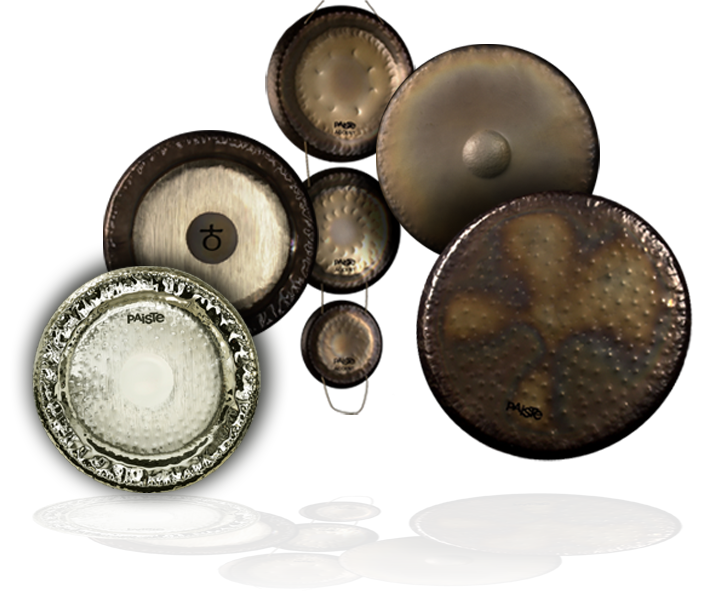
GONGS
Gongs belong to the oldest and most important musical instruments of South East Asia. Their origins may be traced back to the second millennium B.C., but it is assumed that the gong is much older. In Chinese history, gongs are mentioned around 500 A.D., attributed to a nation called HSI YU between Tibet and Burma during the reign of Emperor Hsuan Wu.
Historic research provides us with four main centers - Burma, China, Annam, Java - at least 7 gong shapes and sound structures stem from these regions. Only few families knew the tradition of gong making as it was passed from generation to generation. The art of making gongs was veiled in a sense of magic. Gong makers believed that a gong could only succeed with the help of higher powers, and that they were exposed to forces more so than ordinary humans.
The gong was an important element in the lives of Far East people and is still in some countries today. In Asian families, the gong was an attribute of wealth and served as a status symbol. In rites, the gong was used in the evocation of ghosts and in the banning of demons. Touching a gong brought you fortune and strength. In rituals of the Far East, the gong has retained its special significance to this day.
As a musical instrument, the gong accompanied celebrations, funeral ceremonies, songs, and theater plays. In the music of the Asian high cultures, the gong was used as an orchestral instrument. Orchestras with gong plays containing up to 18 notes were not seldom. They were also played in private concerts at residences.
Since about 1790, gongs were used in European orchestras. Since then, the terms "Tam Tam" for flat gongs, and "Gong" for bossed gongs, have become customary. However, the authentic term in all languages of the origin countries is GONG.
